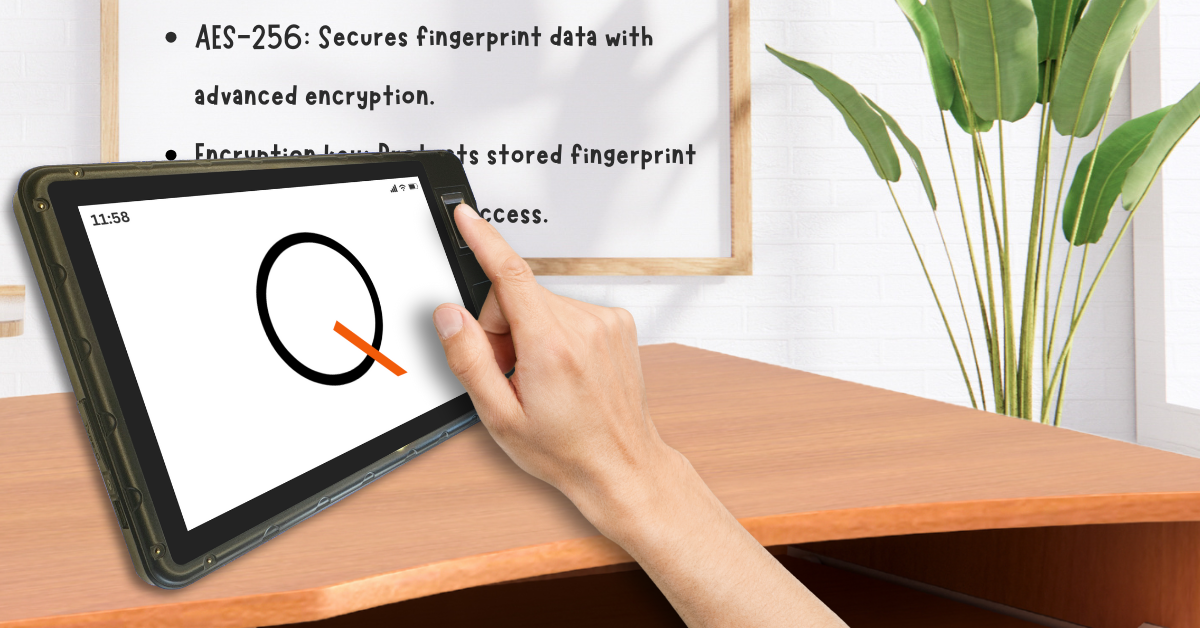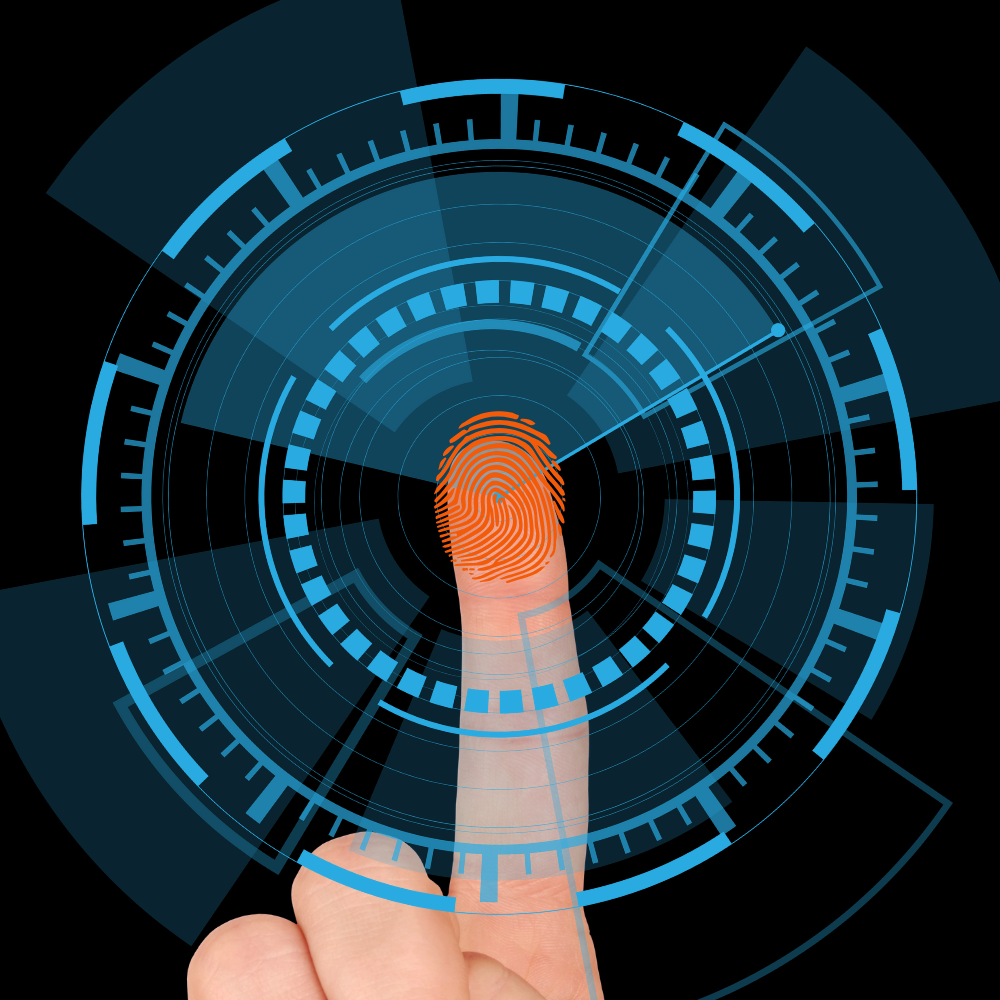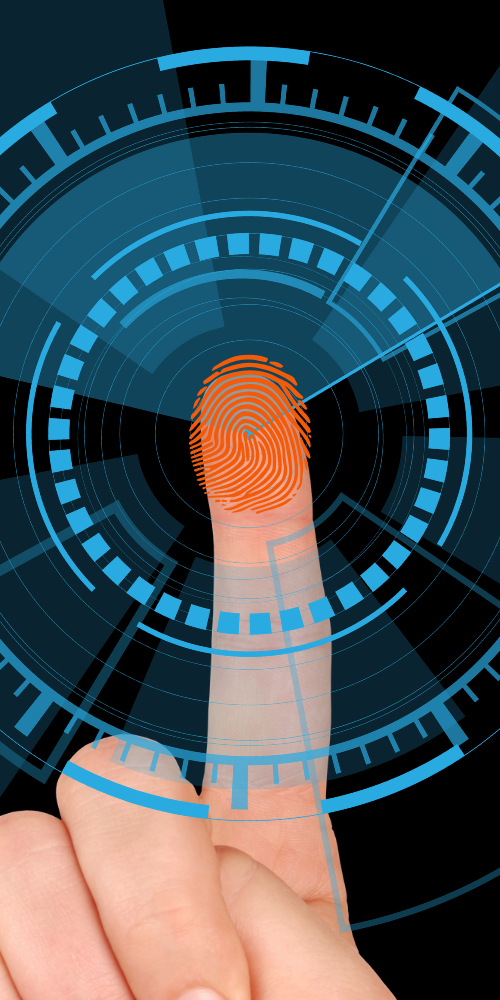Categories
I still remember the first time I used fingerprint scanner technology to unlock my phone—it felt like stepping into an episode of tomorrow’s world. One quick tap, and boom, I was in! But then I started wondering: how does this tiny device know it’s really me?
Fingerprint scanners have become so common in 2025, from unlocking devices to securing workplace doors, yet the tech behind the touch is a fascinating mix of biology, engineering, and computer science. Let’s peel back the layers of fingerprint scanner technology and explore how it works, how it’s evolved, and what makes it so reliable. Trust me, by the end, you’ll be just as amazed as I was!

At its core, fingerprint scanner technology identifies you by analyzing the unique patterns on your fingertip. We’ve all got these little ridges, loops, and whorls on our fingers—called minutiae—that are as unique as a snowflake. When you place your finger on a scanner, it’s not just taking a pretty picture; it’s diving deep into those patterns to confirm your identity. I like to think of it as a high-tech bouncer at a club, checking your “fingerprint ID” before letting you in.
So, what exactly happens during that quick tap? Fingerprint scanner technology operates through a multi-step process that combines hardware and software to achieve precise identification. First, a sensor captures the ridges and valleys of your fingerprint. This can be done using one of several methods—optical, capacitive, or ultrasonic—which we’ll explore later. The captured data is then converted into a digital template, a mathematical representation of your fingerprint’s unique features, such as the distances between ridges or the angles of loops. Importantly, this template isn’t a photo of your fingerprint; it’s a coded map that can’t be reverse-engineered into your actual print, which is a relief for privacy concerns.
Once the template is created, the system compares it to a database of stored templates using an algorithm. This comparison, often referred to as a matching process, determines if the scanned fingerprint aligns with a pre-registered one. At Qube, our systems can perform this match in milliseconds. If there’s a match, you’re granted access; if not, you’re politely denied. It’s a seamless process, but the tech behind it is anything but simple!
Fingerprint scanner technology encompasses a variety of methods, each designed with distinct mechanisms and advantages to suit different applications. This section examines the primary types of fingerprint scanners and elucidates their operational principles.
Optical fingerprint scanners are the old-school version of fingerprint scanner technology, but they’re still widely used. They work like a tiny camera, capturing a high-resolution image of your fingerprint using light. A small light source illuminates your finger, and a charge-coupled device (CCD) sensor—similar to what’s in digital cameras—snaps a picture.
The scanner then analyzes the light and dark areas (ridges reflect light differently than valleys) to create a digital map. While effective, optical scanners can struggle with dirty or wet fingers, which can mess up the image. An xda developers article notes that these scanners are affordable but less secure, as they can sometimes be fooled by high-quality fake prints.
Capacitive scanners are what you’ll find in most smartphones today—they’re my personal favorite because they feel so responsive. This type of fingerprint scanner technology uses an array of tiny capacitors to detect the electrical differences between ridges and valleys.
When you place your finger on the scanner, the ridges (which touch the sensor) alter the charge in the capacitors differently than the valleys (which don’t). This creates a detailed map of your fingerprint. Capacitive scanners are more secure than optical ones because they’re harder to trick with fake prints, and they work better with less-than-perfect fingers—like mine after a long day of gardening!
Thermal fingerprint scanner technology takes a unique approach by detecting the heat patterns generated by your finger. When you place your finger on the scanner, a thermal sensor—typically a pyroelectric material—measures the temperature differences between the ridges (which make direct contact and transfer more heat) and the valleys (which trap air and transfer less heat).
This heat differential creates a thermal map of your fingerprint, which is then converted into a digital template for analysis. Thermal scanners offer distinct advantages, particularly in environments where other scanners might struggle. They are less affected by dirt, oil, or moisture on the finger, as these factors don’t significantly alter heat transfer.
Ultrasonic fingerprint scanner technology is the new kid on the block, and it’s seriously impressive. These scanners use high-frequency sound waves to map your fingerprint, even penetrating through the outer layer of skin to capture details beneath the surface. A small transducer emits ultrasonic pulses, and the reflections from your finger’s ridges and valleys are analyzed to create a 3D map.
An Android Police article highlights how ultrasonic scanners can work through dirt, oil, or even thin gloves, making them ideal for rugged environments. They’re also super secure, as they’re nearly impossible to fool with fake prints. I can’t wait to see these become more common!
Fingerprint scanner technology has come a long way, and I love how its history shows the blend of human curiosity and technological innovation. Let’s break it down into a timeline, split into two key phases: the early days of fingerprint identification and the modern era of digital scanners.
Now, let’s dig into the technical magic behind fingerprint scanner technology: the algorithms that make it all possible. These algorithms are the brains of the operation, handling everything from capturing your fingerprint to verifying your identity. Let’s break it down into two key phases: taking and storing the fingerprint template, and matching and retrieving during verification.
The initial stage of fingerprint scanner technology involves capturing and securely storing the fingerprint data. When a user places their finger on the scanner, the sensor—whether optical, capacitive, or ultrasonic—captures a high-resolution image or map of the fingerprint’s ridges and valleys. This raw data undergoes preprocessing to enhance clarity, involving techniques such as noise reduction, contrast adjustment, and ridge thinning to ensure the image is as clean as possible. Next, the algorithm extracts minutiae points—specific features like ridge endings, bifurcations, and deltas—creating a feature set that represents the fingerprint’s unique characteristics.
This feature set is then encoded into a digital template, a mathematical representation of the minutiae points, such as their coordinates and orientations. Importantly, this template is not a direct image of the fingerprint but a coded dataset that cannot be reverse-engineered into the original print. For added security, the template is encrypted using robust standards like AES 256-bit encryption, ensuring that even if the data is intercepted, it remains unreadable without the decryption key.


Once the fingerprint template is stored, the system must match it against a new scan during verification—a process that requires precision and speed. When a user scans their finger, the system captures a new fingerprint and processes it to extract a fresh set of minutiae points, following the same preprocessing and encoding steps as during the initial capture. The algorithm then retrieves the stored template from its secure database, decrypting it if necessary for comparison.
The matching process employs a minutiae-based matching algorithm, which calculates the similarity between the new feature set and the stored template. This involves aligning the two sets of minutiae points and measuring their correspondence based on factors like the number of matching points, their relative positions, and their orientations. A similarity score is generated, often using a weighted scoring system to account for partial matches or distortions (e.g., a slightly rotated finger). If the score exceeds a predefined threshold, the system declares a match, granting access; otherwise, access is denied. Modern algorithms incorporate machine learning to improve accuracy over time, adapting to variations in fingerprint quality. This process typically completes in milliseconds, ensuring a seamless user experience while maintaining high security.
I’ve been amazed by fingerprint scanner technology ever since I first used it, but I’ll admit—it’s not flawless. While it’s incredibly advanced, there are still some challenges that can make it less reliable in certain situations, along with security concerns that need addressing. Let’s break down the key hurdles and explore potential fixes to make this tech even better.
Challenge: Fingerprint scanners, particularly optical ones, can struggle with environmental factors like dirt, oil, or moisture on your finger, leading to failed scans.
Solution: Switching to ultrasonic scanners can help, as they use sound waves to penetrate through surface contaminants like oil or moisture, ensuring more reliable scans even in tough conditions.
Challenge: Physical damage to fingerprints, such as cuts, scars, or worn ridges (common in manual laborers), can prevent accurate scanning, causing false rejections.
Solution: Switching to ultrasonic scanners can help, as they use sound waves to penetrate through surface contaminants like oil or moisture, ensuring more reliable scans even in tough conditions.
Challenge: Optical scanners can sometimes be tricked by high-quality fake prints, posing a security risk, especially in high-stakes environments. Security experts have flagged this as a concern for older systems.
Solution: Upgrading to capacitive or ultrasonic scanners, which are far harder to fool due to their ability to detect electrical or subsurface features, can mitigate this risk. Regular software updates to improve detection of fakes also help.
Challenge: If a database of fingerprint templates is hacked, it could lead to a privacy disaster, even if the templates are encrypted. As biometrics become more common, stronger safeguards are needed to protect this sensitive data.
Solution: Implementing decentralized storage and using advanced encryption standards like AES 256-bit with secure key management can reduce the risk of breaches. Regular security audits also ensure vulnerabilities are caught early.
Fingerprint scanner technology is one of those things that feels like magic until you understand the tech behind the touch—and then it’s even more impressive. From the sensors that capture your unique ridges to the algorithms that match them in milliseconds, it’s a perfect blend of science and innovation. Sure, there are challenges, but the advancements we’re seeing in 2025 make me so optimistic about the future. Whether you’re unlocking your phone or clocking into work, fingerprint scanners are making our lives easier, safer, and just a little bit more futuristic. So next time you tap that scanner, take a second to appreciate the tech—I know I will!